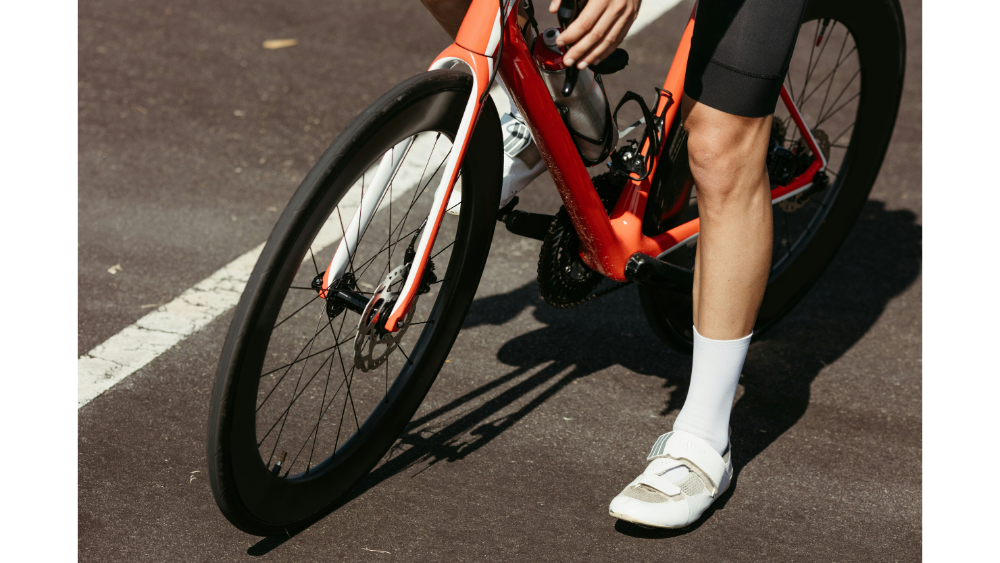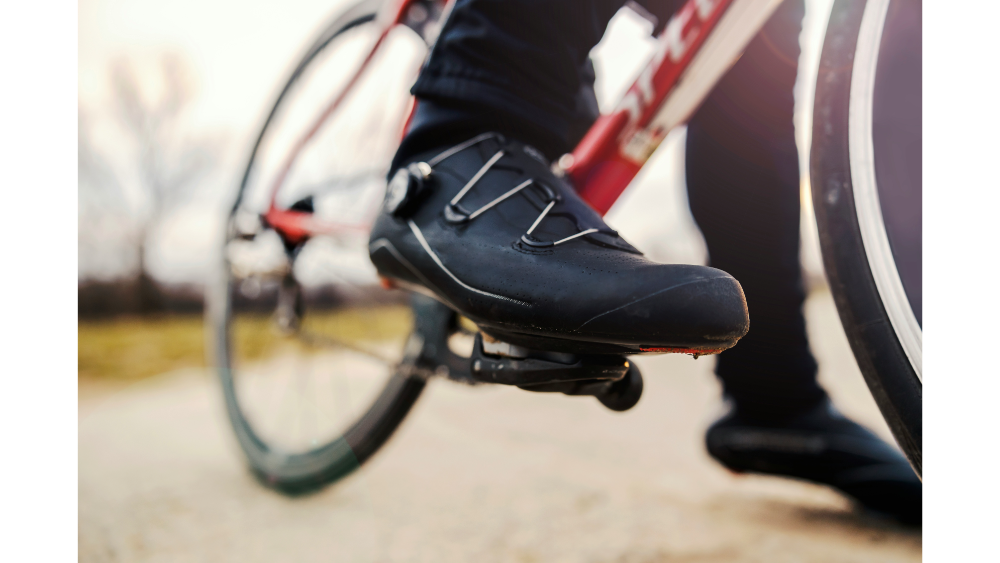Cycling enthusiasts often focus on upgrading their bikes, shoes, or gear, but the importance of replacing cycling shoe insoles is often overlooked. These small yet essential components significantly impact foot comfort, support, and overall cycling performance. So, how often should you replace cycling shoe insoles? Let’s dive into this guide to learn the signs, factors, and best practices for insole replacement.
Why Proper Insole Care is Essential
Cycling shoes are designed to provide a snug fit and transfer power efficiently, but this process heavily relies on the quality and condition of your insoles. Worn-out insoles can lead to discomfort, reduced performance, and even injuries. Maintaining your insoles ensures your feet are supported properly, enhancing your cycling experience.
The Common Misconception About Insoles
Many cyclists assume that insoles last as long as the shoes themselves, but this is not true. Insoles wear out faster due to constant pressure, sweat, and repetitive motion. Ignoring this can lead to avoidable foot pain and a less enjoyable ride.
Signs You Need to Replace Cycling Shoe Insoles

Knowing when to replace your insoles is key to avoiding discomfort and injuries. Here are the main signs to look for:
Visual Wear and Tear
Cracks, Holes, or Thinning Material
Over time, insoles can develop visible cracks, holes, or thinning areas due to repeated use. These are clear signs that the insoles have lost their cushioning and support.
Faded or Flattened Arch Support
If the arch support in your insoles has flattened or lost its shape, it’s time for a replacement. Proper arch support is crucial for maintaining foot alignment.
Discomfort During Rides
Increased Foot Fatigue or Pain
Persistent foot fatigue, soreness, or pain during or after rides often indicates that your insoles are no longer providing adequate cushioning or support.
Blisters or Calluses Appearing Post-Ride
The appearance of blisters or calluses could mean your insoles are worn out and causing friction or pressure points.
Loss of Support and Performance
Worn-out insoles can negatively impact power transfer to your pedals, making your rides less efficient. Additionally, you may experience balance and alignment issues, which could lead to injuries over time.
How Often Should You Replace Cycling Shoe Insoles?

Although no universal rule exists, these guidelines can help you establish the ideal replacement schedule for your insoles. Following these recommendations ensures consistent support and comfort, tailored to your cycling frequency and needs, for a better overall riding experience:
General Guidelines for Replacement
Every 6 to 12 Months for Regular Cyclists
Replacing insoles every 6 to 12 months is recommended for most cyclists to maintain adequate support and cushioning. Regular updates ensure your feet stay comfortable during rides, prevent fatigue or discomfort, and promote better alignment, ultimately enhancing your overall cycling performance and enjoyment over time.
After 300 to 500 Miles for High-Use Riders
If you’re a frequent rider, consider replacing insoles after logging 300 to 500 miles. This is similar to how runners replace their shoe insoles based on mileage.
Custom Recommendations Based on Activity Level
Recreational Cyclists
Cyclists who ride less than twice a week can typically replace their insoles every 12 months. This timeframe helps maintain sufficient support and cushioning, ensuring that occasional rides are comfortable and free from foot discomfort or undue strain.
Competitive Cyclists
Cyclists training daily or racing frequently should replace their insoles every six months or sooner. Regular updates ensure optimal support, comfort, and performance, helping competitive riders maintain their edge and avoid potential foot-related issues during intense activities.
Endurance or Long-Distance Riders
Long-distance cyclists should consider replacing their insoles more frequently, ideally every 3 to 4 months. This ensures consistent support and comfort, reducing the risk of foot fatigue and enhancing performance during extended rides.
Benefits of Regular Insole Replacement
Replacing your cycling shoe insoles regularly provides numerous benefits, improving comfort, support, and performance. Consistent updates help prevent foot issues, enhance your overall riding experience, and ensure you get the most out of every ride.
Enhanced Foot Comfort
New insoles offer enhanced cushioning, alleviating pain and pressure points. This is particularly beneficial for cyclists with high arches or flat feet, ensuring proper support, improved comfort, and a more enjoyable riding experience.
Improved Cycling Performance
Worn-out insoles hinder power transfer, reducing cycling efficiency, while fresh insoles optimize energy transfer from your feet to the pedals. Replacing insoles regularly ensures maximum performance and a smoother, more effective riding experience.
Prevention of Injuries
Regularly replacing insoles helps prevent foot problems such as plantar fasciitis or metatarsalgia, promoting long-term foot health. Timely replacements ensure proper support, reduce discomfort, and enhance overall comfort and performance during your cycling journeys.
Tips for Extending the Life of Your Insoles

While replacement is inevitable, you can take steps to prolong the life of your cycling shoe insoles:
Regular Cleaning and Maintenance
How to Properly Clean Insoles
Remove the insoles from your shoes and gently clean them with mild soap and water. Let them air-dry completely before reinserting.
Avoiding Common Mistakes
Avoid drying insoles with heat sources like dryers, as this may lead to warping or shrinkage. Instead, let them air-dry naturally to maintain their shape and ensure they continue providing proper support and comfort during your rides.
Rotating Insoles or Shoes
For frequent riders, rotating between multiple pairs of insoles or cycling shoes can help distribute wear evenly. This practice extends the lifespan of your gear while maintaining consistent support and comfort for optimal performance during every ride.
Choosing Durable Materials
Choose insoles crafted from durable, high-quality materials such as carbon fiber or EVA foam. These options provide superior performance, lasting support, and enhanced comfort, ensuring they withstand regular use while optimizing your cycling experience.
How to Choose the Right Replacement Insoles
Choosing the right type of replacement insoles is essential for maintaining proper support and comfort. The correct insoles ensure better foot alignment, enhance cycling performance, and provide the cushioning needed for an enjoyable and pain-free ride.
Understanding Different Types of Insoles
Cushioning Insoles for Comfort
These insoles are designed for cyclists who prioritize comfort during long rides.
Supportive Insoles for Stability
Ideal for riders who need extra arch support or have stability issues.
Custom Orthotics for Specific Needs
Custom orthotics offer personalized support and alignment, making them ideal for cyclists with unique foot conditions. Designed to address specific needs, they enhance comfort, improve performance, and help prevent injuries, ensuring a more efficient and pain-free cycling experience.
Fit and Compatibility with Cycling Shoes
Make sure your replacement insoles fit securely inside your cycling shoes and align with your foot’s natural shape. Proper fit and alignment are crucial for maximizing comfort, support, and performance, preventing discomfort or foot strain during rides, and ensuring an efficient and enjoyable cycling experience.
Recommended Brands and Options
Top brands such as Superfeet, Specialized, and G8 Performance provide premium replacement insoles designed to meet diverse needs and preferences. These options deliver excellent support, comfort, and durability, making them ideal for enhancing your cycling experience and addressing specific foot requirements for optimal performance and long-lasting satisfaction.
Common Mistakes Cyclists Make With Insoles
Steer clear of these common mistakes to fully optimize the advantages of your cycling shoe insoles. Proper maintenance, timely replacements, and choosing quality insoles tailored to your needs are key to enhancing comfort, support, and performance while avoiding unnecessary discomfort or potential foot issues during your rides.
Ignoring Signs of Wear
Postponing the replacement of worn-out insoles can result in ongoing discomfort and potentially serious foot problems over time. Regular updates ensure proper support and cushioning, reducing the risk of issues like pain, fatigue, or misalignment. Timely insole replacement is essential for maintaining foot health and cycling performance.
Using Low-Quality or Incorrect Replacements
Using low-quality or poorly fitting insoles may lead to more problems than solutions, compromising comfort, support, and foot health. They can exacerbate issues like discomfort and misalignment, ultimately affecting your cycling performance. Prioritize well-made, properly fitting insoles to ensure optimal support and long-term benefits for your rides.
Not Consulting Professionals
Consulting a podiatrist or bike fitting specialist can ensure you choose the ideal insoles for your specific needs. Their expertise helps address foot alignment, support, and comfort issues, enhancing your cycling performance and preventing potential injuries. Personalized recommendations make a significant difference in optimizing your ride and maintaining foot health.
Frequently Asked How Often Should You Replace Cycling Shoes Insoles Questions (FAQs)

How do I know if my insoles are worn out?
Look for signs like thinning material, discomfort during rides, or reduced arch support.
Can I wash my cycling shoe insoles?
Yes, but always use mild soap and water, and let them air-dry completely.
What are the best insoles for long-distance cycling?
Supportive or custom orthotics are often recommended for endurance riders.
Are custom insoles worth the investment?
For cyclists with specific foot conditions, custom insoles can provide unmatched comfort and performance.
Conclusion
Cycling shoe insoles are a small but crucial component of your gear. Regularly replacing them ensures comfort, support, and optimal performance. By following the tips and guidelines in this guide, you can maintain foot health and enjoy a better riding experience. Prioritize your insoles—it’s a simple step that makes a world of difference.

Leave a Reply